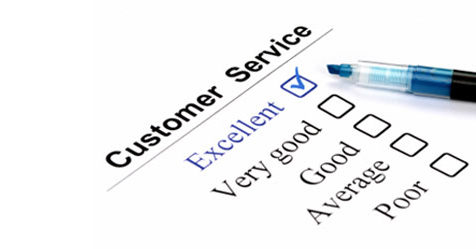Attracting and landing a new customer can be challenging, time consuming, and costly. Many organizations invest extraordinary effort into formulating and implementing strategies to help acquire new business, while allowing those clients they worked so hard to gain just a short time ago slip away.
In order for an organization to survive and grow, it must find ways to maintain the clients/customers it has invested in so heavily. This requires a well-defined plan for customer retention and total employee involvement.
To begin structuring a plan for customer retention, let’s focus on three high-reward areas:
- Providing outstanding levels of customer service
- Maintaining consistent customer satisfaction
- Simplifying and streamlining communications.
Provide Outstanding Levels of Customer Service
Customers will do business with those organizations that respond to their needs. Establishing an effective customer service structure that prepares your organization to respond in a timely manner and address customer needs is the key to maintaining long-term clients. Here are three ways to help ensure client satisfaction:
Make them feel important. Customer service must be a priority when responding to all customer requests, concerns, etc. You and your staff must empathize with the customer and respond to their needs in a manner that instills confidence and reassurance. It may not seem like a big deal to you, but it is important to the person registering a complaint or requesting additional service.
Follow-up is key. Nothing is more frustrating than having someone assure they will address a problem, and then it never actually happens. When a client has a problem, make sure the issue has been resolved and the client is satisfied. Make them feel as important as we say they are, follow up, and ensure satisfaction.
Provide a bit of surprise. Thinking outside the box can sometimes be the boost your customer service relationship needs. Going above and beyond does not have to be extreme; it can be in the form of a small gift, a handwritten or emailed note remembering an important event, or just a quick call to thank them for being a customer.
Maintaining Consistent Customer Satisfaction
Are your customers happy? How do you know?
Happy customers remain customers and tell others. If we want to keep customers, we must be positive that they are pleased with the services they receive, and we also must continue to find ways to increase their level of satisfaction.
Conduct service surveys. One way to define how your customers really feel about the services they receive is to utilize periodic surveys to monitor and track customer satisfaction levels. It is vital to react to the feedback received from survey responses; otherwise, if you ignore it, the net result of the survey process may be deterioration in customer satisfaction instead of enhancement.
Educate your customers. As professional service providers, we must guide our customers and clients, and provide them the information they need to make effective decisions. By providing detailed information about the services we perform and why we perform them, we cement our relationship as a trusted advisor. Setting clear expectation levels for the services we can or will provide helps to eliminate misunderstandings and perceptions of poor service.
Do a little self-promotion. Frequently, as service providers, we step up to provide additional service to our customers without request or charge. Unfortunately, since we perform these tasks quietly and without fanfare, it’s easy for them to be overshadowed by missteps that cast a longer shadow.
Find ways to promote those things that exceed the customers’ expectations. Sending an email when an extra task is complete or sending an invoice for the service provided at no charge are ways to let clients know what you’ve done to help them.
Simplifying and Streamlining Communications
Who should I contact? How do I reach them? What additional services can you provide? These are all questions that a customer may have. In order for your customers to feel you are an integral part of their team, provide them with the capability to address those questions and with more ease.
Begin with a welcome/startup plan. When a new customer comes on board or a client contact changes, have a standardized process to familiarize them with the who, what, where, when, and how of your organization. Ensure they know what services are available and the process to connect with the proper personnel within your organization to acquire them. This will help to avert a great deal of uneasiness and potential dissatisfaction.
Create easy contact access. When a customer has a question, would like to request additional service, or worst of all, has a complaint, trouble getting in touch with the service provider can make for a very bad experience.
Make it as simple as possible for a client to reach you, utilizing the customer’s preferred method. Today, methods of contact may include phone, live chat, text message, email, support ticket system, etc. The key is to make the process as easy and transparent as possible.
The Cost of Poor Customer Service
Keeping the customers that you have requires a plan, hard work, and commitment.
The cost of not keeping the customers you have is high; it is not only calculated in the costs of lost revenue and finding a new customer, but in the damage to your reputation within the service market. Committing the resources to develop, implement, and sustain an organizational customer retention plan will show lasting returns.


